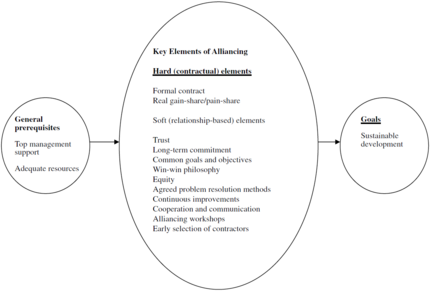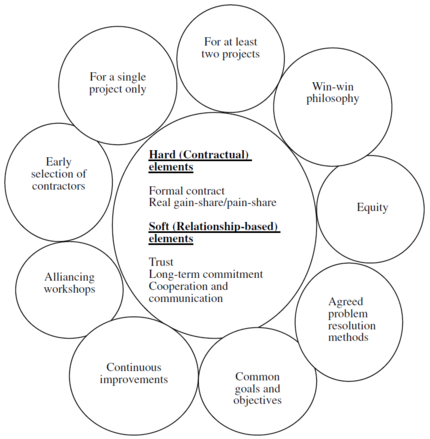Alliancing in construction
Abstract
In construction projects clients often outsource work. This could be due to that the workload does not justify establishing an in-house capability, or benefits by reducing information asymmetry is outweighed by the cost of internal governance. When work is outsourced there is generally an information asymmetry between the client and the supplier. Where the supplier has the expertise. This information asymmetry may lead to opportunistic behavior by the supplier. Consequently, the client might want to switch supplier. However, the costs of switching supplier are often high and include transaction costs for re-tendering, costs for associated litigation and so on. The switching costs for a supplier is often lower as interim payments are frequently used.
Alliancing is a mean to even out the imbalance in information and switching costs, and in this way minimizing the window for opportunistic behavior One problem with alliancing is the complex nature of the concept, which makes it hard to define. It is important that alliancing parties has a common understanding of concept, to avoid a cross-purposed and ineffective discussion. In a meta-study conducted in 2006 by John F.Y. Yeung, Albert P.C. Chan, and Daniel W.M. Chan gather different definitions of alliancing used in articles from scientific journals and conference proceedings, and used Ludwig Wittgenstein’s idea of family resemblance to come up with a definition for alliancing. This definition will be presented in this article. Further the five core elements of alliancing identified in the meta-study, “Formal Contract”, “Real Gain-share/Pain-share”, “Trust”, “Long-term commitment” and “Cooperation and Communication” will be discussed.
In the end the weaknesses of the definition and further works that should be done is discussed.
Definition of alliancing in construction
To have thorough understanding of the concept of alliancing, John F.Y. Yeung, Albert P.C. Chan, Daniel W.M. Chan (2006), went through alliancing literature and sorted out the main factors describing the concept of alliancing. These main factors were separated into three groups as illustrated in Fig.[1].

The factors which make up the general prerequisites, top management support and adequate resources, where presumed to be generic elements need in all type of construction projects. Thus, these elements do not contribute to our understanding of alliancing.
From Fig.[1] it is seen that sustainable development was viewed as a desirable outcome of alliancing. An alliancing project can fail Hence a project is not defined as alliancing based on the outcome. Thus, alliancing will be defined based on the hard and soft elements listed in Fig.[1]. The hard elements refer to contractual and legal features, while the soft refer to elements directly related to relationship and people. Common goal and objective, and agreed problem resolution methods are both viewed as soft elements. Even though, they both indirectly relate to contract clauses. This is due to that both element have a stringer relation to relationship and people.
Having determined the elements that captures the essence of alliancing, the study moves on to using Ludwig Wittgenstein’s idea of family resemblance to establish the relation between these elements and alliancing. As mentioned in the abstract, numerous definitions for alliancing exists. There is a high degree of discrepancy among these definitions as to which elements defines alliancing. Thus, it might seem like the concept cannot be defined. Ludwig Wittgenstein disagrees. He argues that though complex concepts cannot be defined in the traditional way, by stating necessary and sufficient conditions, they can be defined as a complex network of overlapping similarities. John F.Y. Yeung, Albert P.C. Chan, Daniel W.M. Chan (2006) created an alliance sunflower model, on the bases of Wittgenstein’s family resemblance concept, to define construction alliancing. First they searched the website of Google Scholar to find relevant and important literature regarding alliancing. They narrowed it down to 14 relevant pieces of literature. Then the importance of the different elements was determined on the bases of how often they were cited. Higher citing frequency equals high importance, to concept of alliancing. This resulted in five core elements; “Formal Contract”, “Real Gain-share/Pain-share”, “Trust”, “Long-term commitment” and “Cooperation and Communication”. These elements are in the centre of the sunflower illustrated in Fig.[2]. The petals of the sunflower contain peripheral elements. For something to be defined as alliancing it must contain all the core elements and some combination of the petals. Any single petal or combination of petals will do. This makes it possible to create various forms of alliancing projects, dependent of which combination of petals are chosen.

Cite error:
<ref> tags exist, but no <references/> tag was found